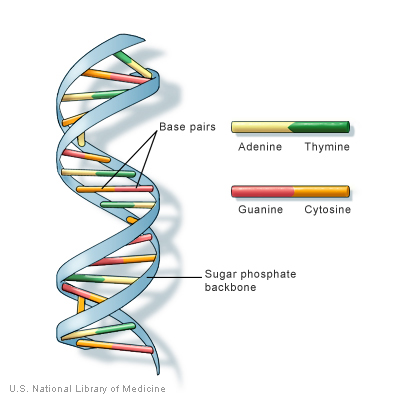Coetzee
Laboratory
Post-GWAS Functionality
The Coetzee Laboratory’s goal is to understand how the genetic predisposition of complex diseases such as cancer and Parkinson’s disease impose risk to aid in the development of therapies that slow or halt the diseases.
Genome-wide association studies (GWAS) of complex phenotypes have become more powerful as sample sizes of cases and controls have increased and meta-analyses have been employed. Additionally, as next-generation sequencing techniques became more feasible and increasingly affordable, more single nucleotide polymorphisms (SNPs) with lower minor allele frequencies (MAFs) have been identified. Thus, association signals at any given locus have become increasingly complex in large part due to the many candidate risk SNPs, correlated with each other due to linkage disequilibrium (LD). Consequently, it is virtually impossible to assign functionality, let alone causality, to any given SNP at a risk locus. This dispiriting situation is only made more daunting by the unexpected finding that more than 80 percent of these risk SNPs for many complex diseases are located in non-coding DNA. To address these issues, we and others have used chromatin biofeatures to inform potential functionality on the original discovery SNPs (known to the field as “index SNPs”) and their many surrogate SNPs — the former revealed by GWAS and the latter defined by r2 of population-specific LD.
Our Impact
We’re raising thousands to save millions.
We’re turning hope into action for the millions of people around the world affected by diseases like cancer and Parkinson’s. Find out how you can help us make a difference.
- 121 peer-reviewed papers published in 2023
- 62 peer-reviewed papers published in high-impact journals in 2023
- 55 clinical trials launched to date
Gerhard (Gerry) Coetzee, Ph.D.
Professor, Department of Neurodegenerative Science
Areas of Expertise
Genetics, complex diseases, prostate cancer, breast cancer, Parkinson’s disease, transcription, chromatin
Biography
Dr. Coetzee has more than 35 years of experience in molecular biology and human genetics. He earned a B.Sc. in chemistry/physiology and a B.Sc. (hon) in biochemistry from South Africa’s University of Potchefstroom, followed by an M.Sc. and Ph.D. in medical biochemistry from the University of Stellenbosch. He completed a postdoctoral fellowship at Hadassah University Hospital in Israel, and then served as a lecturer at University of Cape Town in South Africa, where he later became an associate professor. In 1986, he moved to University of Southern California as a visiting scientist and, in 2008, was named a professor of urology, molecular microbiology and immunology, and preventive medicine at USC’s Norris Comprehensive Cancer Center in 2008. He also served as assistant dean of research integrity from 2014 to 2015. Dr. Coetzee joined Van Andel Institute in November 2015 as a professor in the Department of Neurodegenerative Science.
Selected Publications
For a full list of Dr. Coetzee’s publications, please visit his Google Scholar page.
Prahl J, Pierce SE, Schans EJC, Coetzee G, Tyson T. 2022. The Parkinson’s disease variant rs356182 regulates neuronal differentiation independently from alpha-synuclein. Hum Mol Genet.
Prahl J, Coetzee G. 2022. Genetic elements at the alpha-synuclein locus. Front Neurosci.
Prahl J, Pierce SE, Coetzee GA, Tyson T. 2022. Alpha-synuclein negatively controls cell proliferation in dopaminergic neurons. Mol Cell Neurosci 119:103702.
Booms A, Coetzee G. 2021. Functions of intracellular alpha-synuclein in microglia: Implications for Parkinson’s disease risk. Front Cell Neurosci.
Lubben N, Ensink E, Coetzee GA, Labrie V. 2021. The enigma and implications of brain hemispheric asymmetry in neurodegenerative diseases. Brain Commun. 3(3).
Pierce SE, Booms A, Prahl J, van der Schans EJC, Tyson T, Coetzee GA. 2020. Post-GWAS knowledge gap: the how, where and when. npj Parkinsons 6:23.
Marshall LL, Killinger BA, Ensink E, Li P, Li KX, Cui W, Lubben N, Weiland M, Wang X, Gordevicius J, Coetzee GA, Ma J, Jovinge S, Labrie V. 2020. Epigenomic analysis of Parkinson’s disease neurons identifies Tet2 loss as neuroprotective. Nat Neuro.
Booms A, Coetzee GA, Pierce SE. 2019. MCF-7 as a model for functional analysis of breast cancer risk variants. Cancer Epidemiol Biomarkers Prev.
Brundin P, Coetzee GA. 2019. Genetically engineered stem cell-derived neurons can be rendered resistant to alpha-synuclein aggregate pathology. Eur J Neurosci.
Buckley M, Woods NT, Tyrer JP, Mendoza-Fandiño G, Lawrenson K, Hazelett DJ, Najafabadi HS, Gjyshi A, Carvalho RS, Lyra Jr. PC, Coetzee SG, Shen HC, Karevan R, Yang A, Earp MA, Yoder SJ, Risch H, Chenevix-Trench G, Ramus SJ, Phelan CM, Coetzee GA, Noushmehr H, Hughes TR, Sellers TA, Goode EL, Pharoah PD, Gayther SA, Monteiro AN. 2018. Functional analysis and fine mapping of the 9p22.2 ovarian cancer susceptibility locus. Can Res.
Schmit SL*, Edlund CK*, Schumacher FR*, Gong J*,…Coetzee GA,…Peters U, Casey G, Hsu L, Conti DV, Gruber SB. 2018. Novel common genetic susceptibility loci for colorectal cancer. J Natl Cancer Inst.
Pierce SE, Tyson T, Booms A, Prahl J, Coetzee GA. 2018. Parkinson’s disease genetic risk in a midbrain neuronal line. Neurobiol Dis 114:53–64.
Coetzee GA, Pierce SE. 2018. The five dimensions of Parkinson’s disease genetic risk. J Parkinsons Dis 8:13–15.
Pierce SE, Coetzee GA. 2017. Parkinson’s disease-associated genetic variation is linked to quantitative expression of inflammatory genes. PLoS One 12(4):e0175882.
Feng Y*, Rhie SK*,…Coetzee GA…,Haiman CA. 2017. Characterizing genetic susceptibility to breast cancer in women of African ancestry. Cancer Epidemiol Biomarkers Prev 26(7):1016–1026.
Rhie SK, Guo Y, Tak YG, Yao L, Shen H, Coetzee GA, Laird PW, Farnham PJ. 2016. Identification of activated enhancers and linked transcription factors in breast, prostate, and kidney tumors by tracing enhancer networks using epigenetic traits. Epigenetics Chromatin 9:50.
Coetzee SG, Pierce SE, Brundin P, Brundin L, Hazelett DJ, Coetzee GA. 2016. Enrichment of risk SNPs in regulatory regions implicate diverse tissues in Parkinson’s disease etiology. Sci Rep.
Coetzee SG, Coetzee GA, Hazelett DJ. 2015. motifbreakR: an R/Bioconductor package for predicting the disruptiveness of single nucleotide polymorphisms or mutations on transcription factor binding sites. Bioinformatics 31(23):3847–3849.
Han YY, Hazelett DJ, Wicklund F, Frederick R, Schumacher RF, Stram DO, Berndt SI, Wang Z, Rand KA, Hoover RN, Machiela MJ, Yeager M, Burdette L, Chung CC, Hutchinson A, Yu K, Xu J, Travis RC, Key TJ, Siddiq A, Canzian F, Takahashi A, Kubo M, Stanford JL, Kolb S, Gapstur SM, Diver RW, Stevens VL, Strom SS, Pettaway CA, Al Olama AA, Kote-Jarai Z, Eeles RA, Yeboah ED, Tettey Y, Biritwum RB, Adjei AA, Tay E, Truelove A, Niwa S, Chokkalingam AP, Isaacs WB, Chen C, Lindstrom S, Le Marchand L, Giovannucci EL, Pomerantz M, Long H, Li F, Ma J, Stampfer M, John EM, Ingles SA, Kittles RA, Murphy AB, Blot WJ, Signorello LB, Zheng W, Albanes D, Virtamo J, Weinstein S, Nemesure B, Carpten J, Leske MC, Wu S-Y, Hennis AJM, Rybicki BA, Neslund-Dudas C, Hsing AW, Chu L, Goodman PJ, Klein EA, Zheng SL, Witte JS, Casey G, Riboli E, Li Q, Freedman ML, Hunter DJ, Gronberg H, Cook MB, Nakagawa H, Kraft P, Chanock SJ, Easton DF, Henderson BE, Coetzee GA, Conti DV, Haiman CA. 2015. Integration of multiethnic fine-mapping and genomic annotation to prioritize candidate functional SNPs at prostate cancer susceptibility regions. Hum Mol Genet 24(19):5603–5618.
Amin Al Olama et al …. Coetzee GA, Eeles RA, Kote-Jarai Z. 2015. Multiple novel prostate cancer susceptibility signals identified by fine-mapping of known risk loci among Europeans. Hum Mol Genet 24(19):5589–5602.
Hazelett DJ, Rhie SK, Gaddis M, Yan C, Lakeland DL, Coetzee SG, Henderson BE, Noushmehr H, Cozen W, Kote-Jarai Z, Eeles RA, Easton DF, Haiman CA, Lu W, Farnham PJ, Coetzee GA. 2014. Comprehensive functional annotation of 77 prostate cancer risk loci. PLoS Genet 10(1):e1004102.
Noushmehr H, Coetzee SG, Rhie S, Yan C, Coetzee GA. The functionality of prostate cancer predisposition risk regions is revealed by AR enhancers. In: Wang Z, editor. Androgen-responsive genes in prostate cancer. New York (NY): Springer US; c2013. p. 59–84.
Coetzee SG, Rhie SK, Berman BP, Coetzee GA, Noushmehr H. 2012. FunciSNP: an R/Bioconductor tool integrating functional non-coding data sets with genetic association studies to identify candidate regulatory SNPs. Nucleic Acids Res 40(18):e139.
Coetzee GA. 2012. The usefulness of prostate cancer genome-wide association studies. J Urol 187(1):9–10.
Freeman ML, Monteiro AN, Gayther SA, Coetzee GA, Risch A, Plass C, Casey G, De Biasi M, Carlson C, Duggan D, James M, Liu P, Tichelaar JW, Vikis HG, You M, Mills IG. 2011. Principles for post-GWAS functional characterization of cancer risk loci. Nat Genet 43(6):513–518.
Noushmehr H, Coetzee GA. 2011. Identification and functional annotation of GWAS risk SNPs. Cell Cycle 10(23):3995–3996.
Jia L, Landan G, Pomerantz M, Jascheck R, Herman P, Reich D, Yan C, Khalid O, Kantoff P, Oh W, Manak JR, Berman BP, Henderson BE, Frenkel B, Haiman CA, Freedman M, Tanay A, Coetzee GA. 2009. Functional enhancers at the gene-poor 8q24 cancer-linked locus. PLoS Genet 5:e1000597.
Jia L, Berman BP, Jariwala U, Yan X, Cogan JP, Walters A, Chen T, Buchanan G, Frenkel B, Coetzee GA. 2008. Genomic androgen receptor-occupied regions with different functions, defined by histone acetylation, coregulators and transcriptional capacity. PLoS One 3(11):e3645.
Jia L, Shen HC, Wantroba M, Khalid M, Liang G, Wang Q, Gentzschein E, Pinski JK, Stanczyk FZ, Jones PA, Coetzee GA. 2006. Locus-wide chromatin remodeling and enhanced androgen receptor-mediated transcription in recurrent prostate tumor cells. Mol Cell Biol 26(19):7331–7341.
Jia L, Coetzee GA. 2005. AR-dependent PSA expression in androgen-independent prostate cancer does not involve AR occupancy of the PSA locus. Cancer Res 65(17):8003–8008.
Ingles SA, Ross RK, Yu MC, Irvine RA, La Pera G, Haile RW, Coetzee GA. 1997. Association of prostate cancer risk with genetic polymorphisms in vitamin D receptor and androgen receptor. J Natl Cancer Inst 89(2):166–170.
Irvine RA, Yu MC, Ross RK, Coetzee GA. 1995. The CAG and GGC microsatellites of the androgen receptor gene are in linkage disequilibrium in men with prostate cancer. Cancer Res 55(9):1937–1940.
Monroe KR, Yu MC, Kolonel LN, Coetzee GA, Wilkens LR, Ross RK, Henderson BE. 1995. Evidence of X-linked or recessive genetic component to prostate cancer risk. Nat Med 827–829.

Ashley Douglass, B.S.
Senior Administrative Assistant II

Steve Pierce, Ph.D.
Computational Biologist III, Department of Neurodegenerative Science

Trevor Tyson, Ph.D.
Research Scientist, Department of Neurodegenerative Science

JC Vanderschans, B.S.
Lab Manager, Department of Neurodegenerative Science






